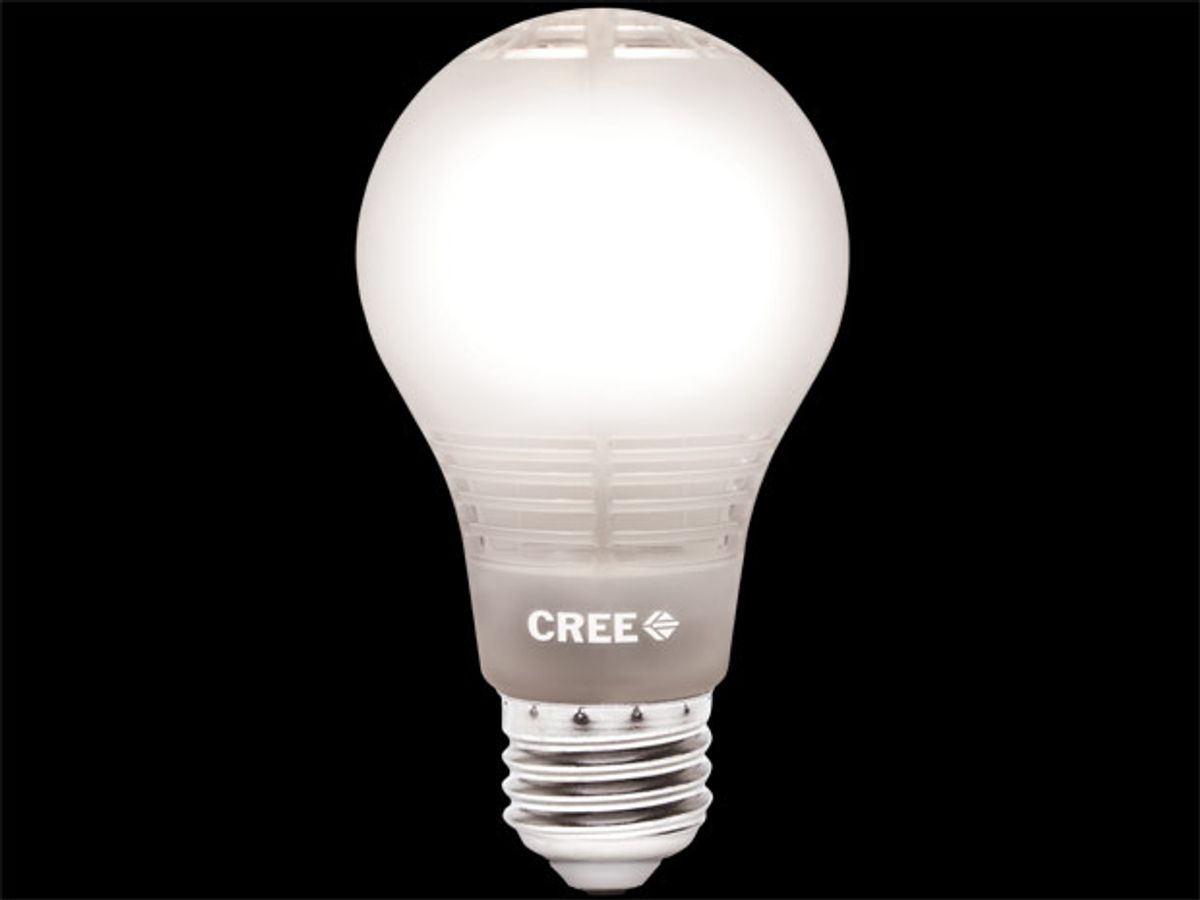Heat sinks have made LED bulbs the freaks of the lighting world. Metal collars and other heat sinks serve to draw away heat from LEDs to ensure long life, but they also give LED bulbs an unfamiliar, bulky look and add to their costs.
LED maker Cree on Tuesday is introducing a new consumer bulb that does away with the metal heat sink seen on most LED bulbs. The dimmable bulbs come with a lower cost, too: $7.97 for a 40-watt and 60-watt equivalent, down from $9.97 for a “soft white” version. The “daylight” version with whiter light costs $8.97.
The new design employs a few engineering tricks and the company's latest generation of high-power LEDs to reduce the cost, says Mike Watson vice president of strategy at Cree, which makes LEDs atop silicon carbide wafers.
To remove the heat sink, engineers created a new structure to house the LEDs. The company’s previous bulbs used a metal “tower” that held the LEDs in the center of the globe and also served to transfer heat to a metal collar at the bulb’s base. These heat sinks can be big: with Cree’s 100-watt equivalent product, the heat sink is nearly as large as the bulb.
In its new design, heat is removed from the LEDs through convection, or a flow of air through the bulb. The LEDs are mounted on circuit boards, rather than the metal tower. As the diodes heat up, they draw air from outside the bulb through small vent-like openings at the base and on the top. Because hot air rises, air flows continually through the bulb to cool the LEDs. The airflow circulates whether the bulb is vertical, horizontal or upside down, Watson says.
In addition to lowering cost, Cree is also seeking to make LEDs look more familiar, so consumers will replace incandescent bulbs and compact fluorescent lights (CFL), he says.
Other lighting companies have taken different routes to thermal management. UGetLight and Switch both have a liquid-cooled bulb, which Switch says ensures long life and makes bulbs safe for enclosed fixtures. The most recent products from General Electric and Philips have eliminated ungainly heat sinks in their first-generation bulbs with more sleek, tapered metal bases near the bottom.
Heat sinks and other forms of thermal management represent about 25 to 30 percent of the total cost in an LED bulb, second only to the LEDs themselves, Watson says.
Cree was also able to lower costs by using fewer LEDs—eight instead of 10 for a 60-watt equivalent. Its latest high-power LEDs run at a higher current to produce more light in a smaller amount of space. In general, running more current through LEDs will degrade their life. Watson says the Cree’s LEDs are designed for high power and its latest consumer bulbs have the same 25,000-hour projected lifetime, which can be more than 20 years depending on use.
"We believe the most light in a small space or the most lumens per wafer wins in the end," Watson says. "Having a high-power LED means you can drive the product harder and at higher temperatures reliably."
Cree’s 60-watt equivalent consumes 11 watts, compared to 9.5 watts for its current product, and the 40-watt equivalent still draws six watts.
The LED lighting industry is in a race to bring down the purchase price of bulbs and entice consumers to try them, putting the technology on a relatively rapid cost reduction curve. And as prices creep under $10 and approach $5, more consumers are likely to buy LEDs and fuel faster adoption.



